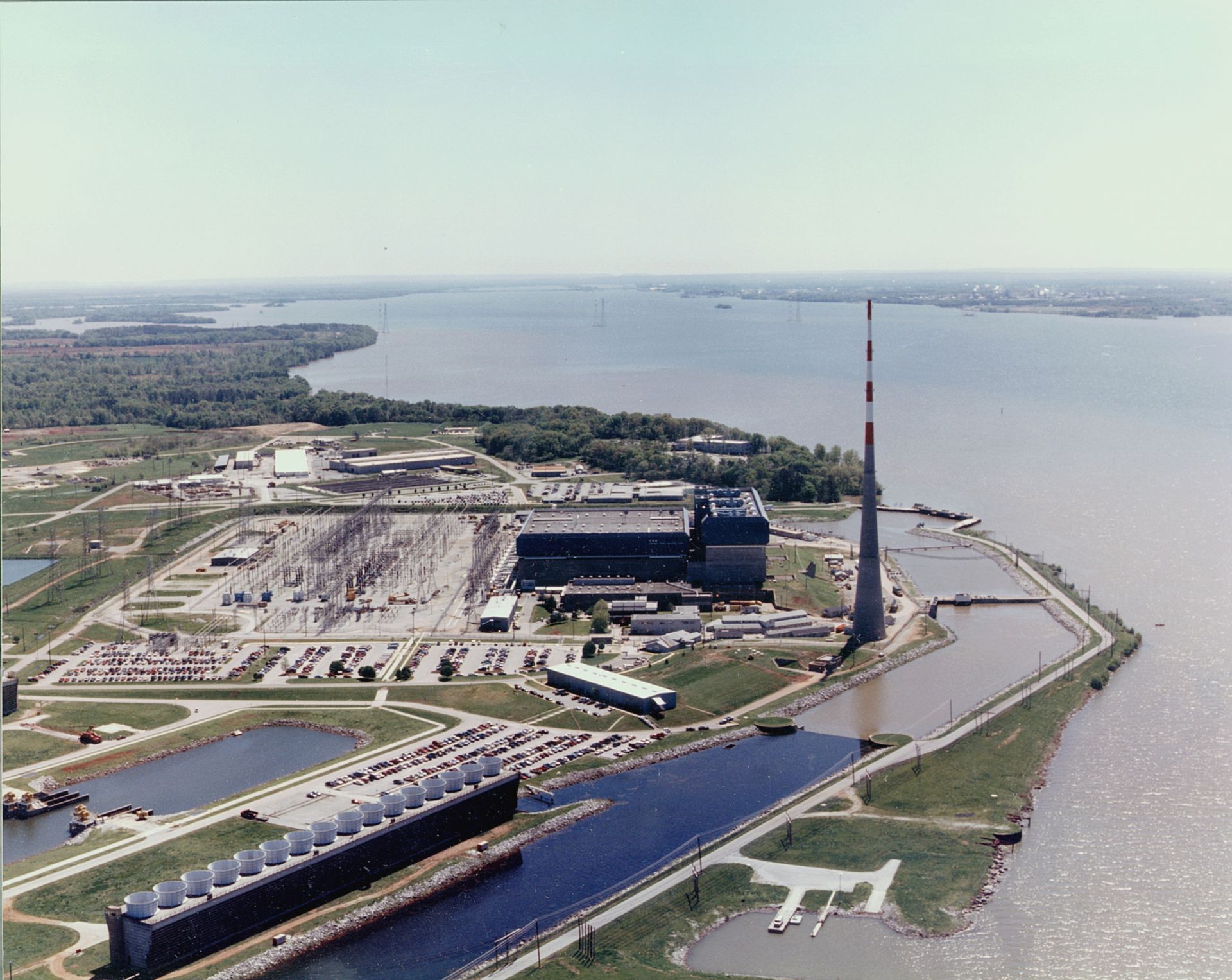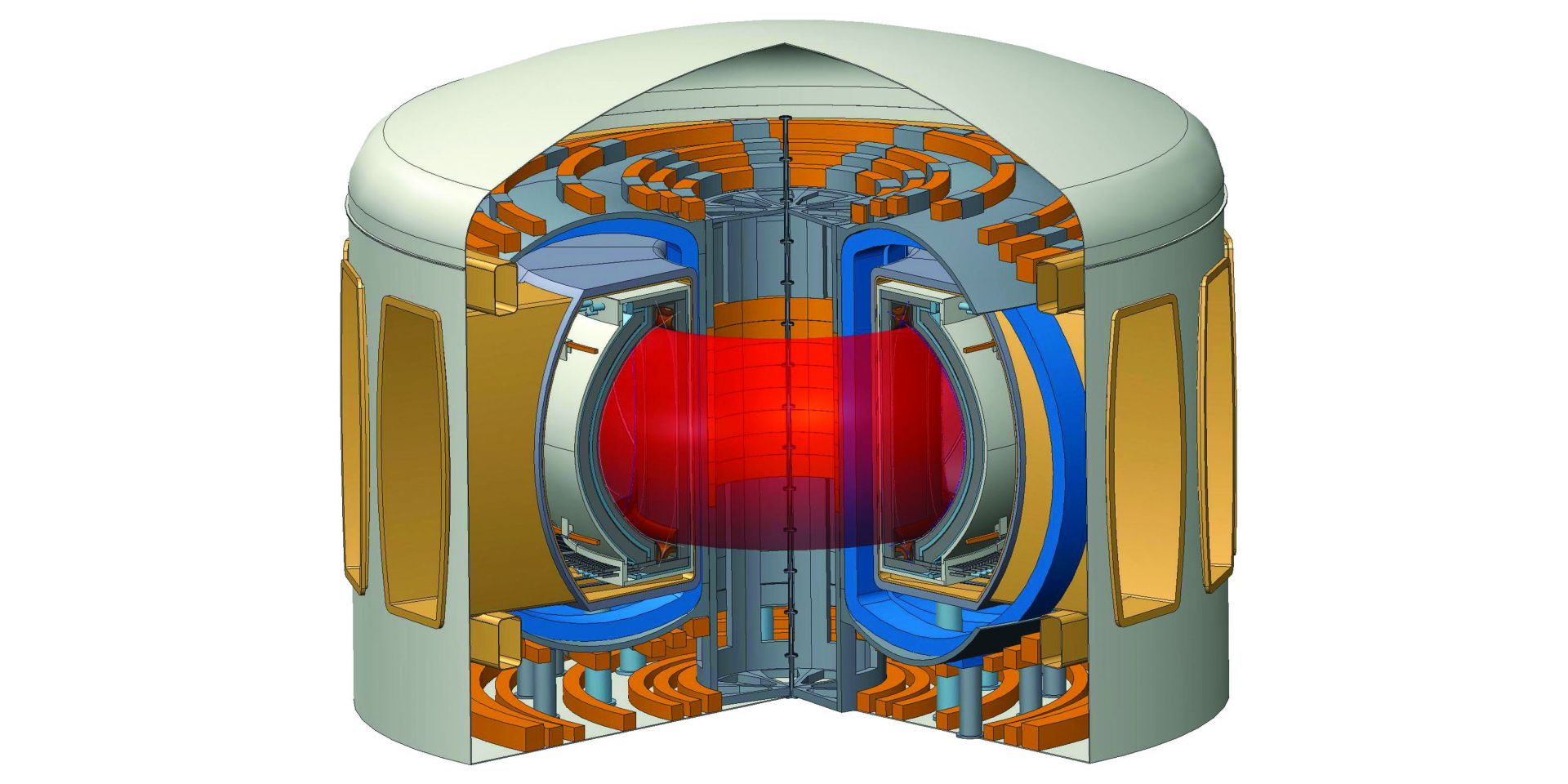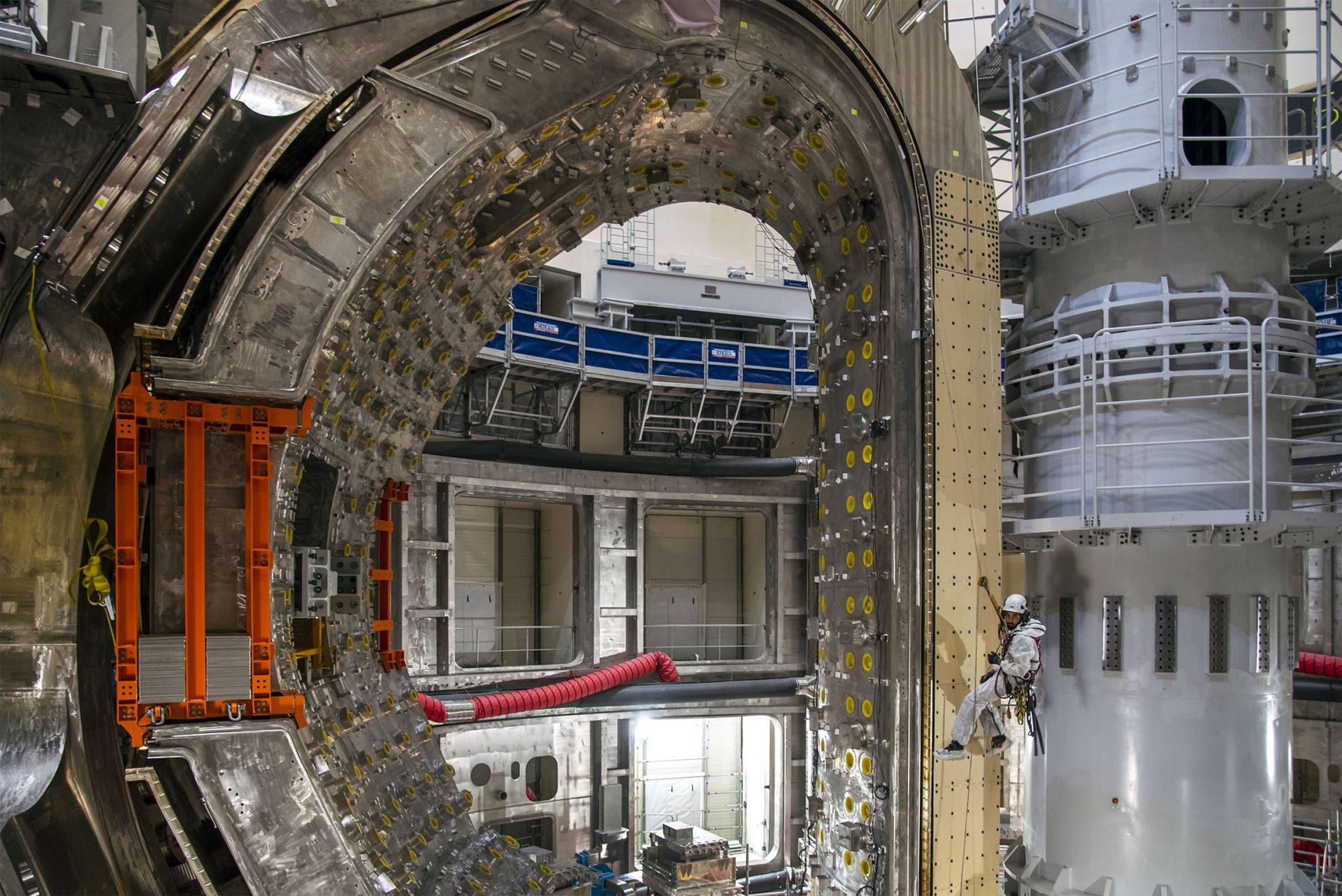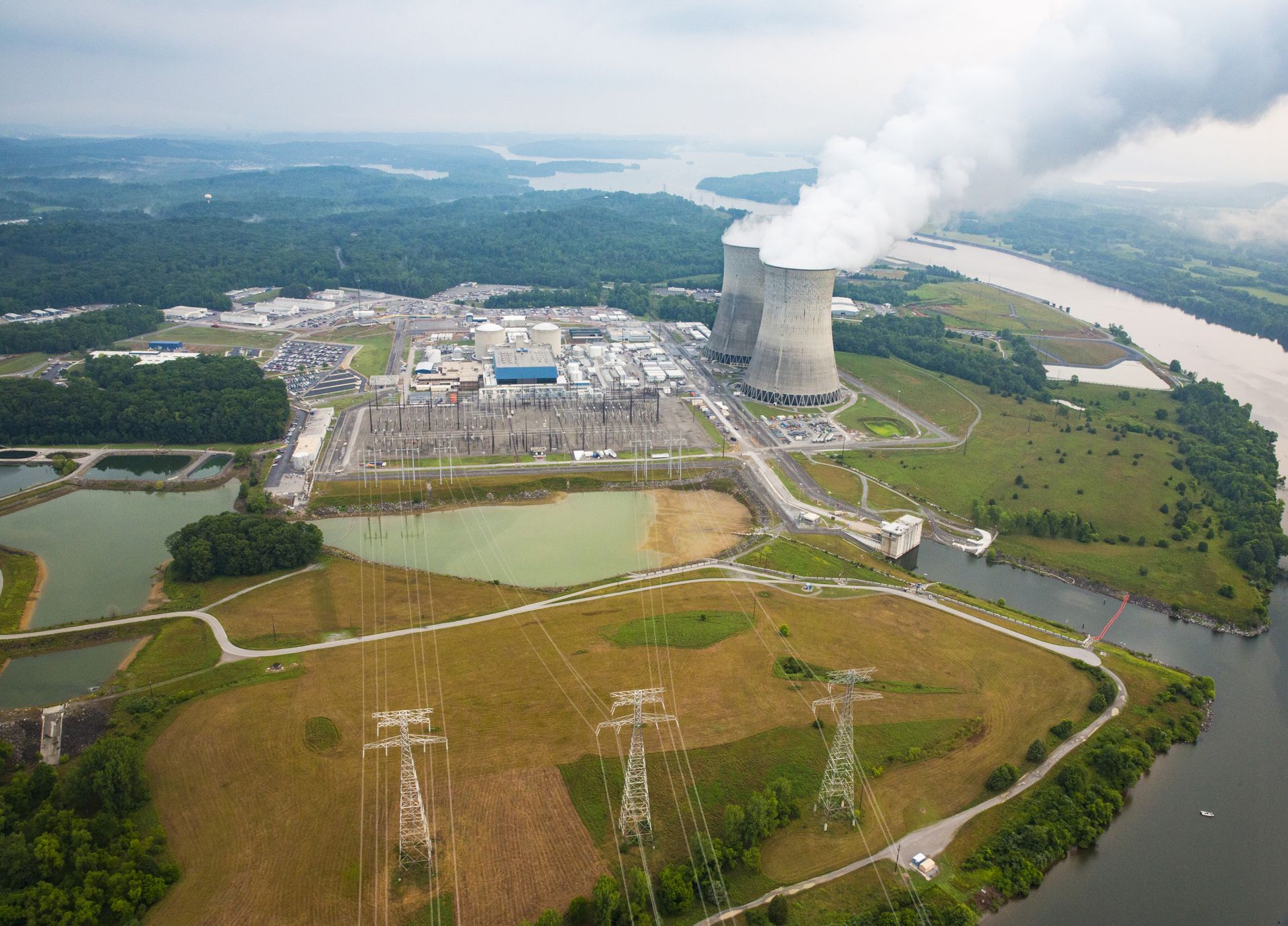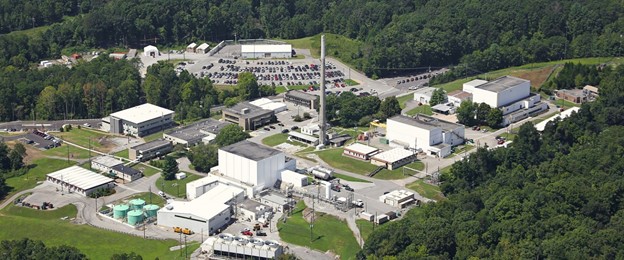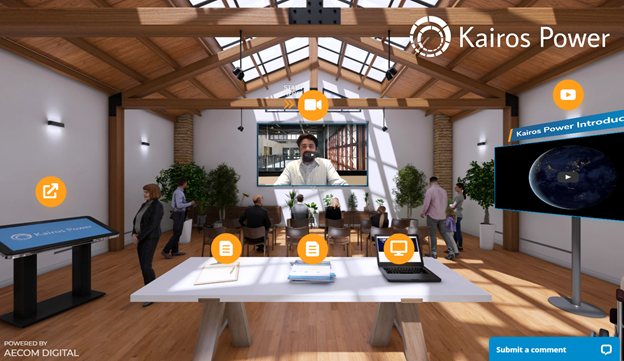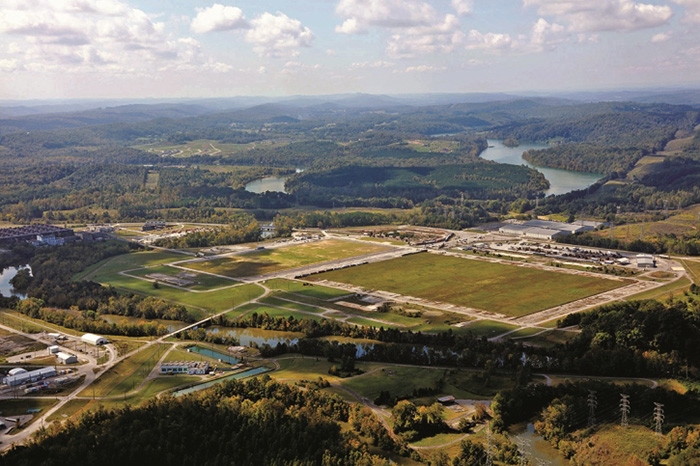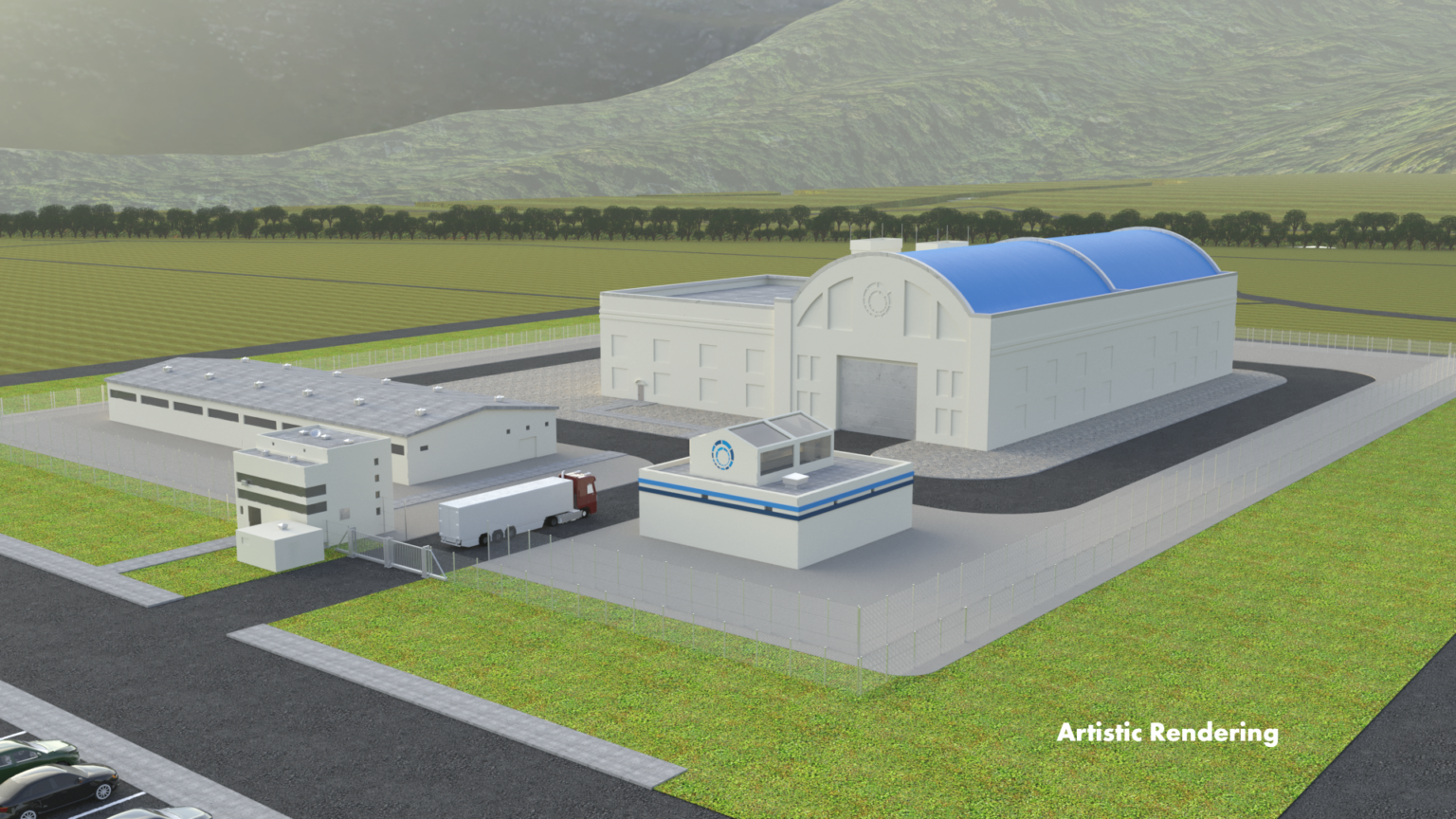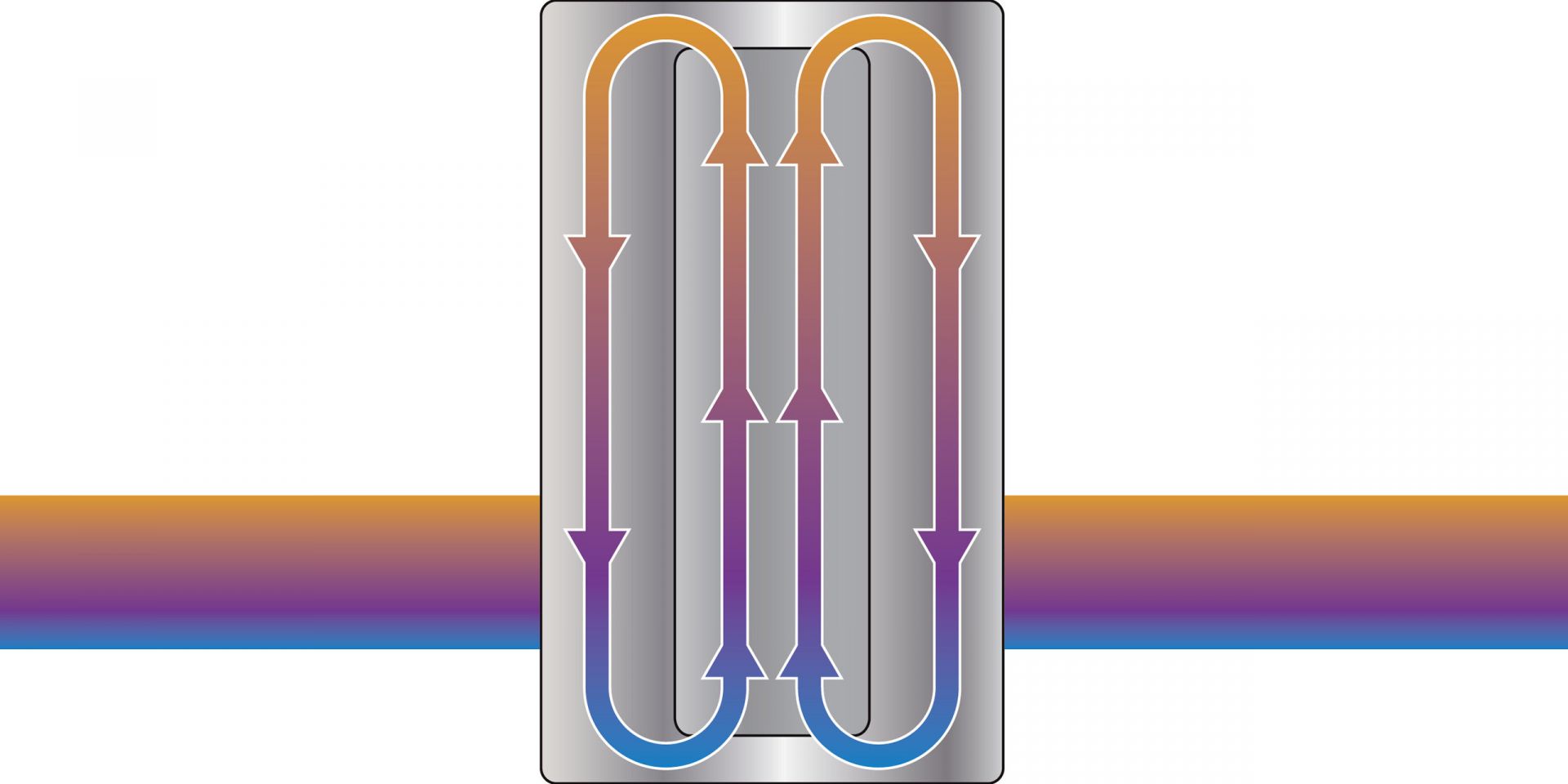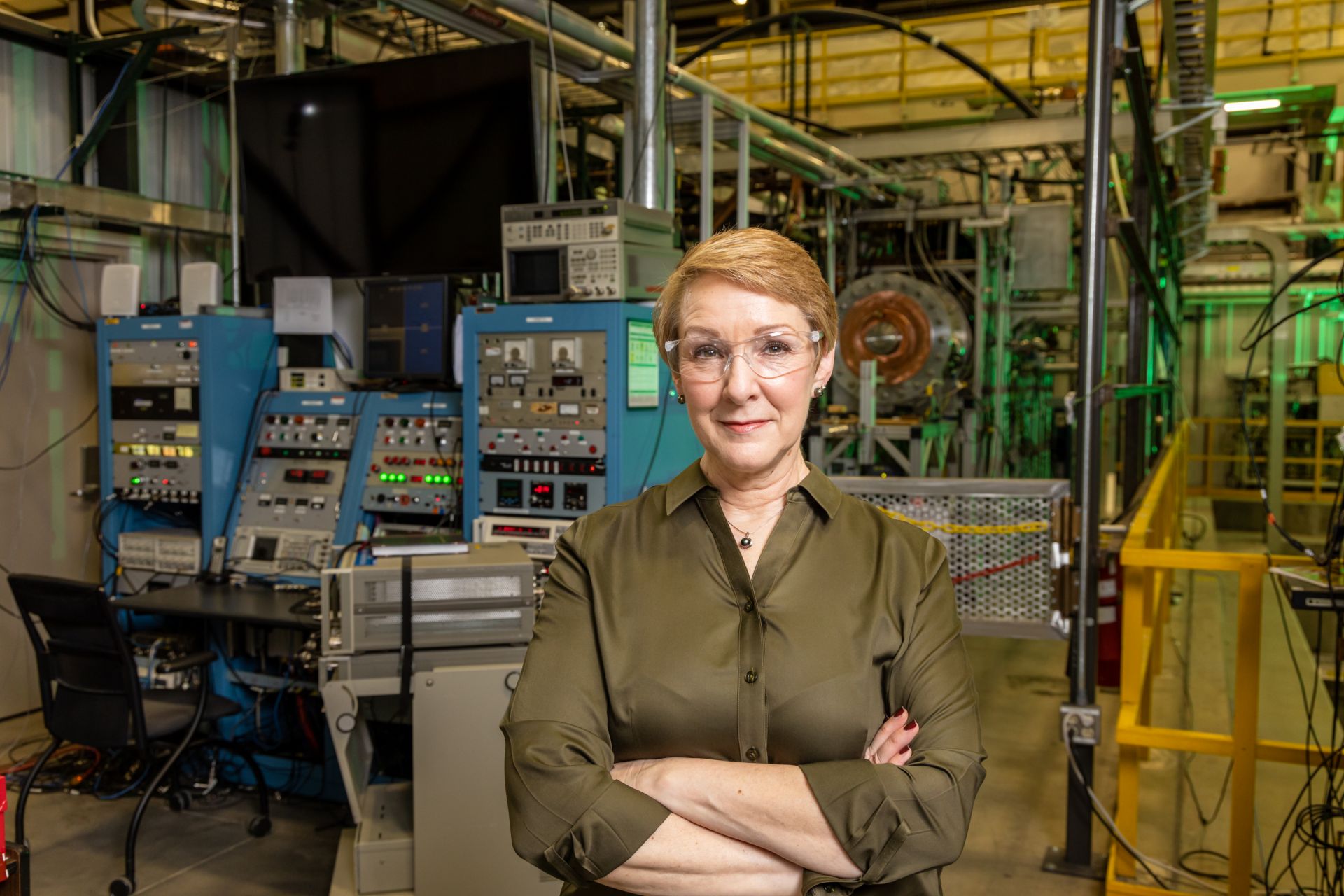Radioisotopes target cancer, improve imaging, and have myriad other medical uses
ORNL radioisotope manufacturing coordinator Jillene Sennon-Greene places a shipment vial of actinium-225 inside the dose calibrator to confirm its activity is within customer specifications. (Photo: Carlos Jones/ORNL, DOE)
On August 2, 1946, 1 millicurie of the isotope carbon-14 left Oak Ridge National Laboratory, bound for the Barnard Free Skin and Cancer Hospital in St. Louis, Mo.
That tiny amount of the radioisotope was purchased by the hospital for use in cancer studies. And it heralded a new peacetime mission for ORNL, built just a few years earlier for the production of plutonium from uranium for the Manhattan Project.
December 15, 2023, 4:56PMNuclear NewsDonna Kemp Spangler and Joel Hiller BWXT’s microreactor components would be designed to be transported directly from the factory to the deployment site. (Image: BWXT)
“The tools of the academic designer are a piece of paper and a pencil with an eraser. If a mistake is made, it can always be erased and changed. If the practical-reactor designer errs, he wears the mistake around his neck; it cannot be erased. Everyone sees it.”
Many in the nuclear community are familiar with this sentiment from Admiral Rickover. A generation of stagnation in the industry has underscored the truth of his words. But as economies around the world put a price on carbon emissions, there’s a renewed sense of urgency to deploy clean energy technologies. This shifts the global balance of economic competitiveness, and it’s clear that the best path forward for nuclear requires combining the agility of private innovators with the technology and capabilities of national laboratories.
The Integrated Effects Test at TerraPower’s laboratory in Everett, Wash. (Photo: Southern Company/TerraPower)
Southern Company, TerraPower, and Core Power (a U.K.-based firm focused on developing nuclear technologies for the maritime sector) have commenced pumped-salt operations in the Integrated Effects Test (IET) facility, the Atlanta, Ga.-based utility announced Tuesday, marking another milestone in the development of TerraPower’s first-of-a-kind, Generation IV Molten Chloride Fast Reactor (MCFR).
Conceptual art of the Hermes low-power demonstration reactor. (Image: Kairos Power)
The Nuclear Regulatory Commission staff has completed its final environmental impact statement (FEIS) for Kairos Power’s application to build the Hermes demonstration reactor in Oak Ridge, Tenn., and is advising that the construction permit (CP) be issued.
“After weighing the environmental, economic, technical, and other benefits against environmental and other costs, and considering reasonable alternatives, the NRC staff recommends, unless safety issues mandate otherwise, that the NRC issue the CP to Kairos,” the FEIS states.
The National Reactor Testing Station (Photo: DOE)
Gas-cooled reactors have roots that reach way back to the development of early experimental reactors in the United States and Europe. In the United States, early experimental reactors at Oak Ridge and Brookhaven National Laboratories were air-cooled, as were early production reactors known as the “Windscale Piles” in the United Kingdom. Dragon, also located in the United Kingdon and operational from 1965 to 1976, used helium as the coolant and graphite as the moderator.
Browns Ferry: A breaker-to-breaker run. (Photo: NRC)
The Tennessee Valley Authority took Browns Ferry-2 off line February 17 for a refueling and maintenance outage, following a nearly two-year, breaker-to-breaker run—the first in the Alabama nuclear plant’s history.
According to the utility, the unit established a new record for itself with 665 days of continuous operation, producing more than 20 billion kilowatt-hours of electricity.
The first sector of the ITER vacuum vessel was placed in the assembly pit in May. Here, a technician positions targets on the surface of the component to be used in laser metrology. (Photo: ITER Organization)
Delivery of electricity from fusion is considered by the National Academies of Engineering to be one of the grand challenges of the 21st century. The tremendous progress in fusion science and technology is underpinning efforts by nuclear experts and advocates to tackle many of the key challenges that must be addressed to construct a fusion pilot plant and make practical fusion possible.
TVA's Watt Bar nuclear power plant.
As part of its strategy to achieve net-zero status by 2050, the Tennessee Valley Authority yesterday issued a request for proposals for supplying up to 5 GW of carbon-free energy that must be operational before 2029.
Aerial view of the High Flux Isotope Reactor. (Photo: ORNL)
The nonproliferation-related monitoring of nuclear reactor operations received a boost from a new study focusing on the use of seismic and acoustic data for such purposes, ScienceDaily reported last week. The study, conducted by investigators at Oak Ridge National Laboratory, was published March 9 in the journal Seismological Research Letters.
ANS presented Civil Rights-era students and the U.S. Dept. of Energy with inaugural award for integrating first public schools in the southeast U.S.
The American Nuclear Society (ANS) has honored eighty-five Black former students from Tennessee, known as the Scarboro-Oak Ridge, TN 85, and the U.S. Department of Energy (DOE) with the society’s inaugural Social Responsibility in the Nuclear Community Award for their courage and leadership in pioneering the integration of public schools in the southeast United States.
Explore Kairos Power’s plans in a virtual open house.
By 2030, Kairos Power aims to demonstrate electricity production from a full-scale, 140-MWe fluoride salt–cooled high-temperature reactor, the KP-X. In service of that goal, Kairos plans to demonstrate Hermes, a scaled-down 35-MWth nonpower reactor, in Oak Ridge, Tenn.
Hermes is being built to “prove our ability to deliver affordable nuclear heat,” said Mike Laufer, Kairos Power chief executive officer and cofounder, as he explained Kairos’s plans to the local community during a September 28 webinar now available to view on demand. Laufer took questions, and Kairos took the opportunity to introduce a virtual open house that visitors can tour to view videos and interactive features and even submit comments.
An aerial view of the ETTP site. Photo: Heritage Center, LLC
Back in July, officials from the state of Tennessee and Kairos Power met in Nashville to celebrate Kairos’s plans to construct a low-power demonstration reactor in the East Tennessee Technology Park in Oak Ridge, Tenn. The demonstration facility is a scaled-down version of Kairos’s Fluoride Salt–Cooled High Temperature Reactor (KP-FHR), dubbed Hermes. The company first announced plans in December 2020 to redevelop the ETTP’s former K-33 gaseous diffusion plant site for construction of Hermes.
Artistic rendering of the Hermes low-power demonstration reactor. (Image: Kairos Power)
Today, Tennessee governor Bill Lee joined Department of Economic and Community Development commissioner Bob Rolfe and Kairos Power officials in Nashville, Tenn., to celebrate Kairos’s plans to construct a low-power demonstration reactor in the East Tennessee Technology Park in Oak Ridge, Tenn. The company first announced its plans to redevelop the former K-33 gaseous diffusion plant site at the Heritage Center, a former Department of Energy site complex, in December 2020.
ORNL associate laboratory director Kathy McCarthy at the prototype which led to the Material Plasma Exposure eXperiment (MPEX), a device that will support fusion materials research. Photo: ORNL
Oak Ridge National Laboratory has a long record of advancing fusion and fission science and technology. Today, the lab is focused more than ever on taking advantage of that spectrum of nuclear experience to accelerate a viable path to fusion energy and to speed efficient deployment of advanced nuclear technologies to today’s power plants and future fission systems.
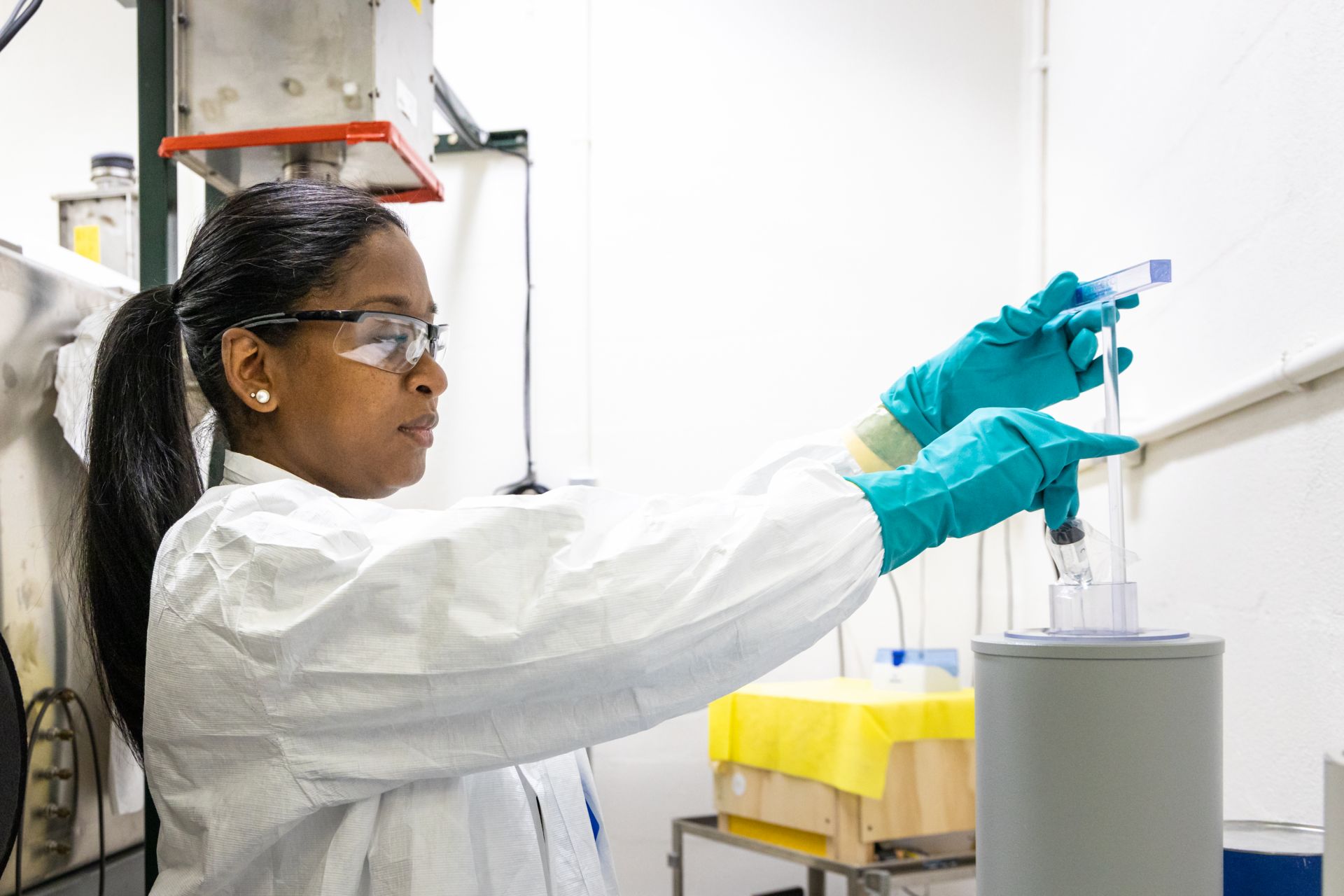



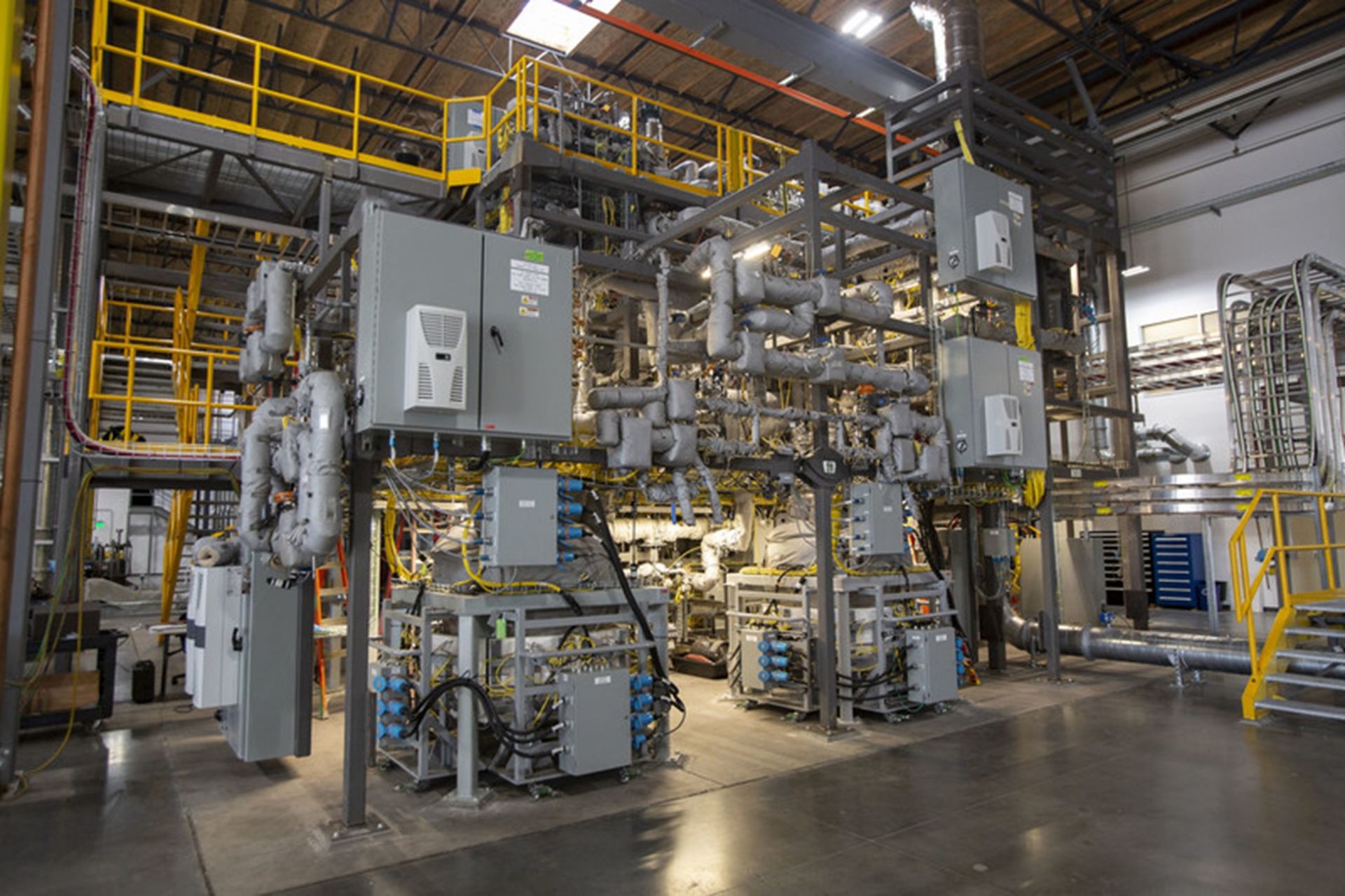
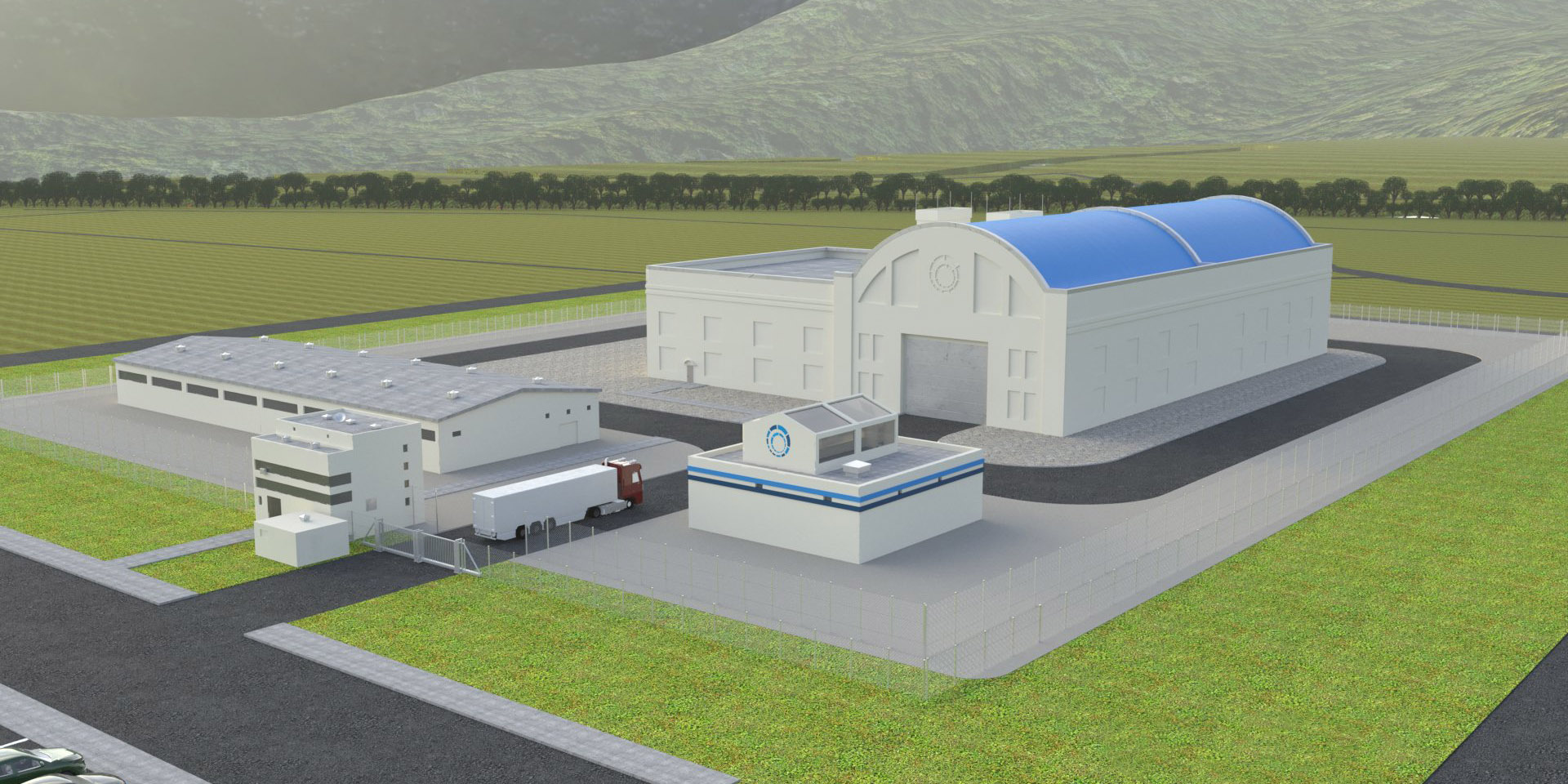
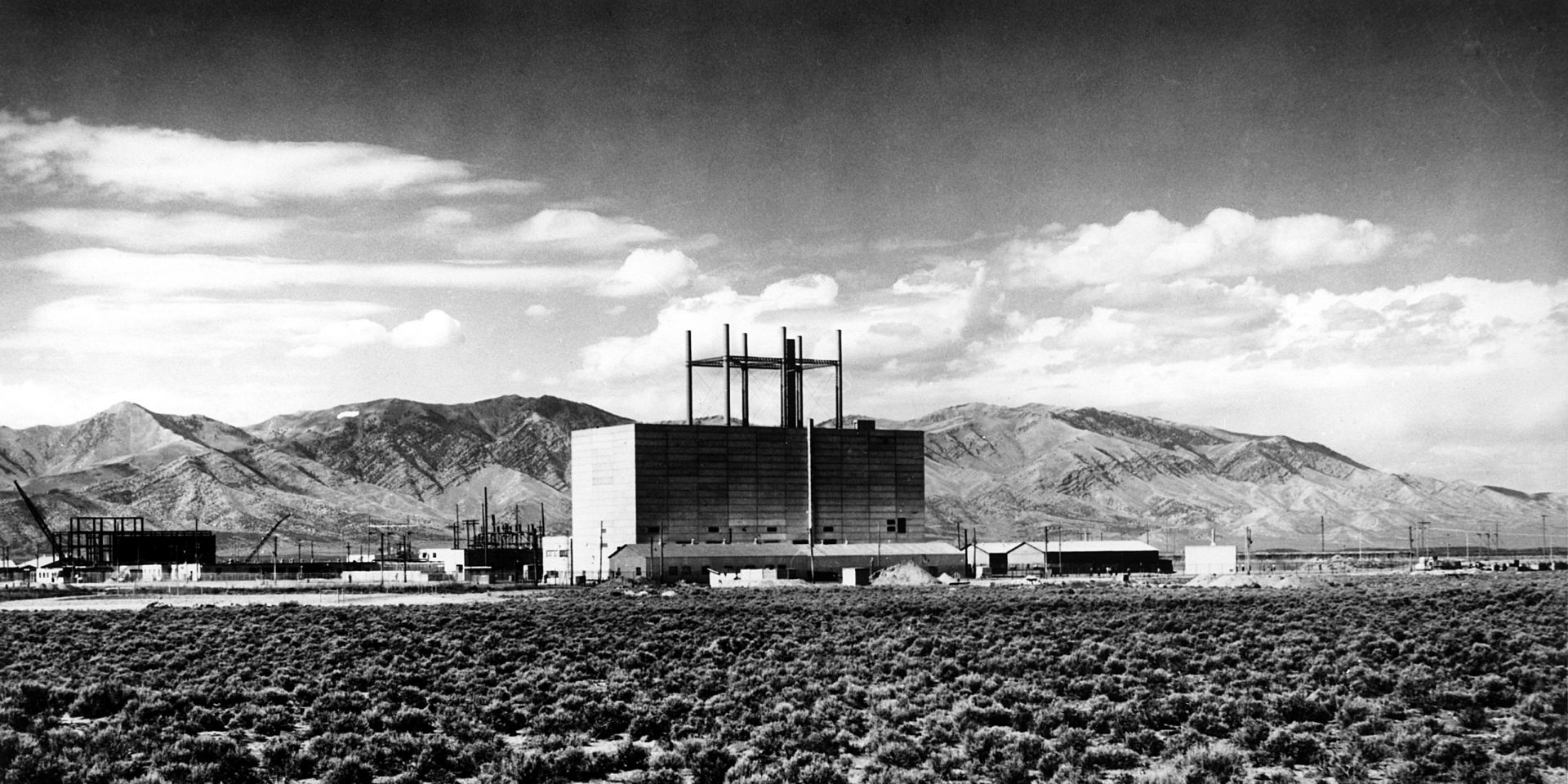 2x1.jpg)
